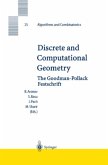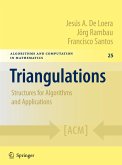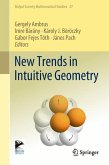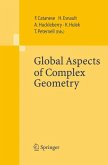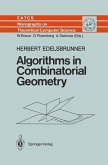This heavily-illustrated book contains twenty-eight major articles that present a comprehensive picture of the current state of discrete and computational geometry. Many of the articles solve long-outstanding problems in the field.
While we were busy putting together the present collection of articles celebrating the twentieth birthday of our journal, Discrete & Computational Geometry, and, in a way, of the ?eld that has become known under the same name, two more years have elapsed. There is no doubt that DCG has crossed the line between childhood and adulthood. By the mid-1980s it became evident that the solution of many algorithmic qu- tions in the then newly emerging ?eld of computational geometry required classical methodsandresultsfromdiscreteandcombinatorialgeometry. Forinstance,visibility and ray shooting problems arising in computer graphics often reduce to Helly-type questions for line transversals; the complexity (hardness) of a variety of geometric algorithms depends on McMullen's upper bound theorem on convex polytopes or on the maximum number of "halving lines" determined by 2n points in the plane, that is, the number of different ways a set of points can be cut by a straight line into two parts of the same size; proximity questions stemming from several application areas turn out to be intimately related to Erdos' ? s classical questions on the distribution of distances determined by n points in the plane or in space. On the other hand, the algorithmic point of view has fertilized several ?elds of c- vexity and of discrete geometry which had lain fallow for some years, and has opened new research directions.
While we were busy putting together the present collection of articles celebrating the twentieth birthday of our journal, Discrete & Computational Geometry, and, in a way, of the ?eld that has become known under the same name, two more years have elapsed. There is no doubt that DCG has crossed the line between childhood and adulthood. By the mid-1980s it became evident that the solution of many algorithmic qu- tions in the then newly emerging ?eld of computational geometry required classical methodsandresultsfromdiscreteandcombinatorialgeometry. Forinstance,visibility and ray shooting problems arising in computer graphics often reduce to Helly-type questions for line transversals; the complexity (hardness) of a variety of geometric algorithms depends on McMullen's upper bound theorem on convex polytopes or on the maximum number of "halving lines" determined by 2n points in the plane, that is, the number of different ways a set of points can be cut by a straight line into two parts of the same size; proximity questions stemming from several application areas turn out to be intimately related to Erdos' ? s classical questions on the distribution of distances determined by n points in the plane or in space. On the other hand, the algorithmic point of view has fertilized several ?elds of c- vexity and of discrete geometry which had lain fallow for some years, and has opened new research directions.


